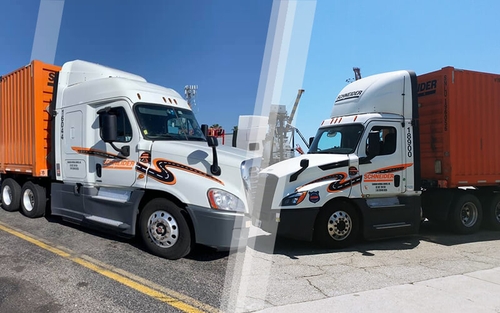Estimated reading time: 2 minutes
Schneider is changing how the mileage pay is calculated for drivers. Now, instead of using Household Movers Guide (HHMG) miles, Schneider will be using practical miles to calculate mileage.
Schneider is constantly working to find new ways to enhance driver experience and make driver pay more transparent and comprehensive. This change from HHMG mileage to practical miles will do just that.
Drivers asked and we listened. So, starting mid-July, Van Truckload, Dedicated and Tanker drivers will be transitioning from HHMG mileage to practical miles. Intermodal drivers will not be affected by this change because their mileage is already calculated using practical miles.
HHMG miles vs. practical miles
Household Movers Guide (HHMG) miles
HHMG have been the accepted industry standard for calculating miles since the 1970s. This style of mileage calculation puts an emphasis on driving the shortest distance between two points traveling on authorized highways.
This calculation does not consider time as a factor, so these kinds of routes may take more time to travel fewer miles. This means that HHMG miles may cause drivers to take routes with roads that are not as ideal for large trucks, simply because it is the route with the shortest mileage.
However, over the years, technology has improved to allow for more detailed calculations and routing and find the most efficient and ideal driving routes and roads, which is why it makes so much sense to change to practical miles.
Practical miles
Practical mileage is the most likely (or practical) route based on truck-specific or designated routes. This method of mileage calculation places a higher priority on interstate highway routes over toll and secondary highways, making it the most time efficient method of driving.
Practical miles takes into account the needs of drivers. So, instead of taking the route with the shortest distance, drivers can utilize routes with the best roads for semi-trucks.
For example, with practical mileage, a driver would be routed to take a major highway instead of a smaller road to get to a destination. This route may increase the number of miles a driver has to travel, but it would ultimately cut down on drive time, making it the more efficient option.
What does this change mean for drivers?
After this change is implemented, any time Schneider drivers see mileage, they can be assured it was calculated using practical miles.
Gone are the days of having to drive shorter routes with longer country roads and crowded two-lane streets. Now, more priority will be placed on driving routes that are more efficient and less time consuming for drivers.






